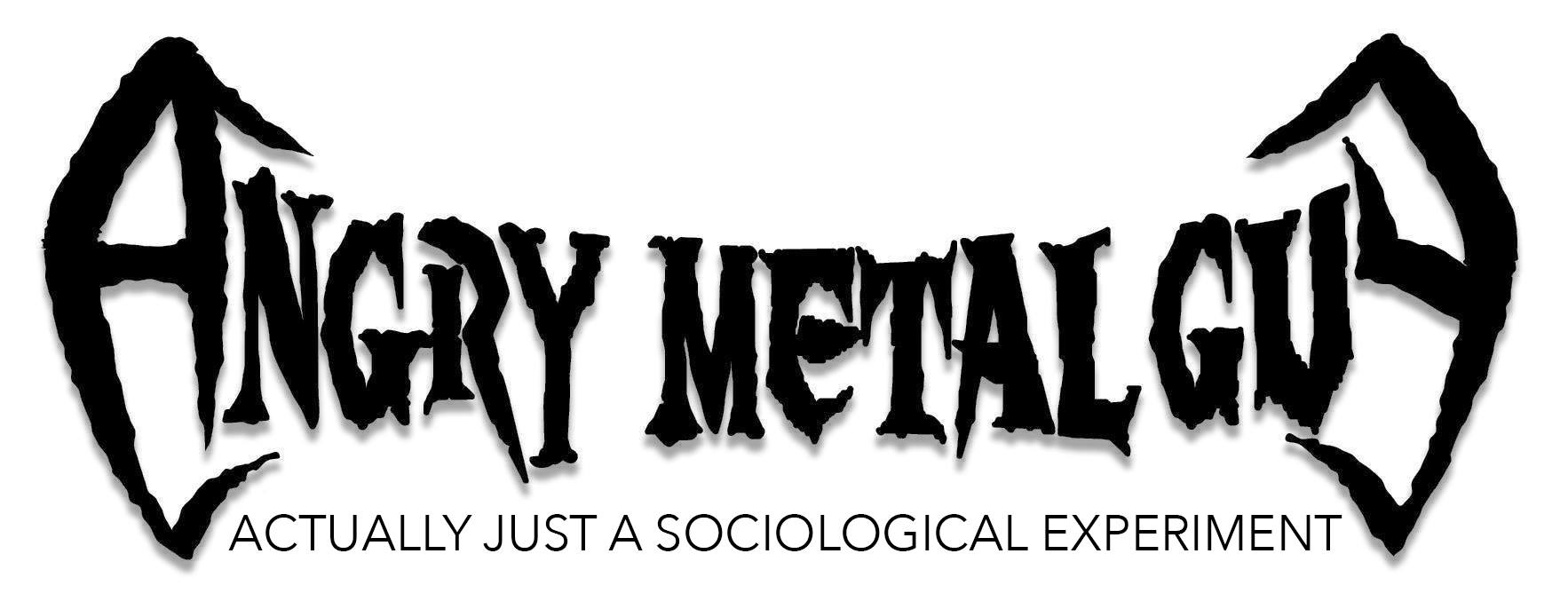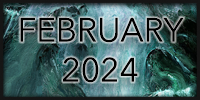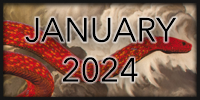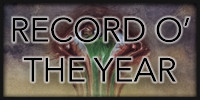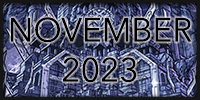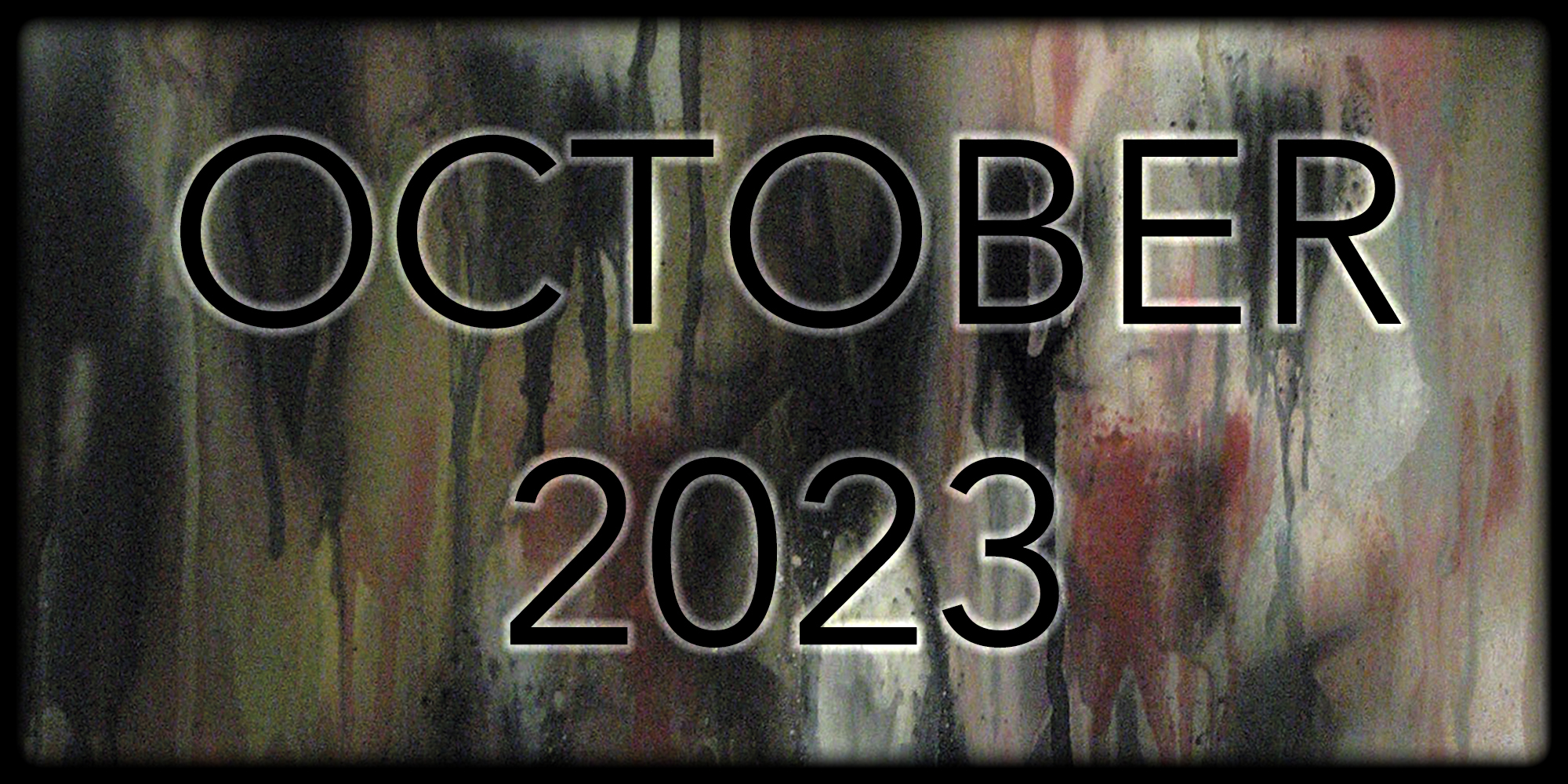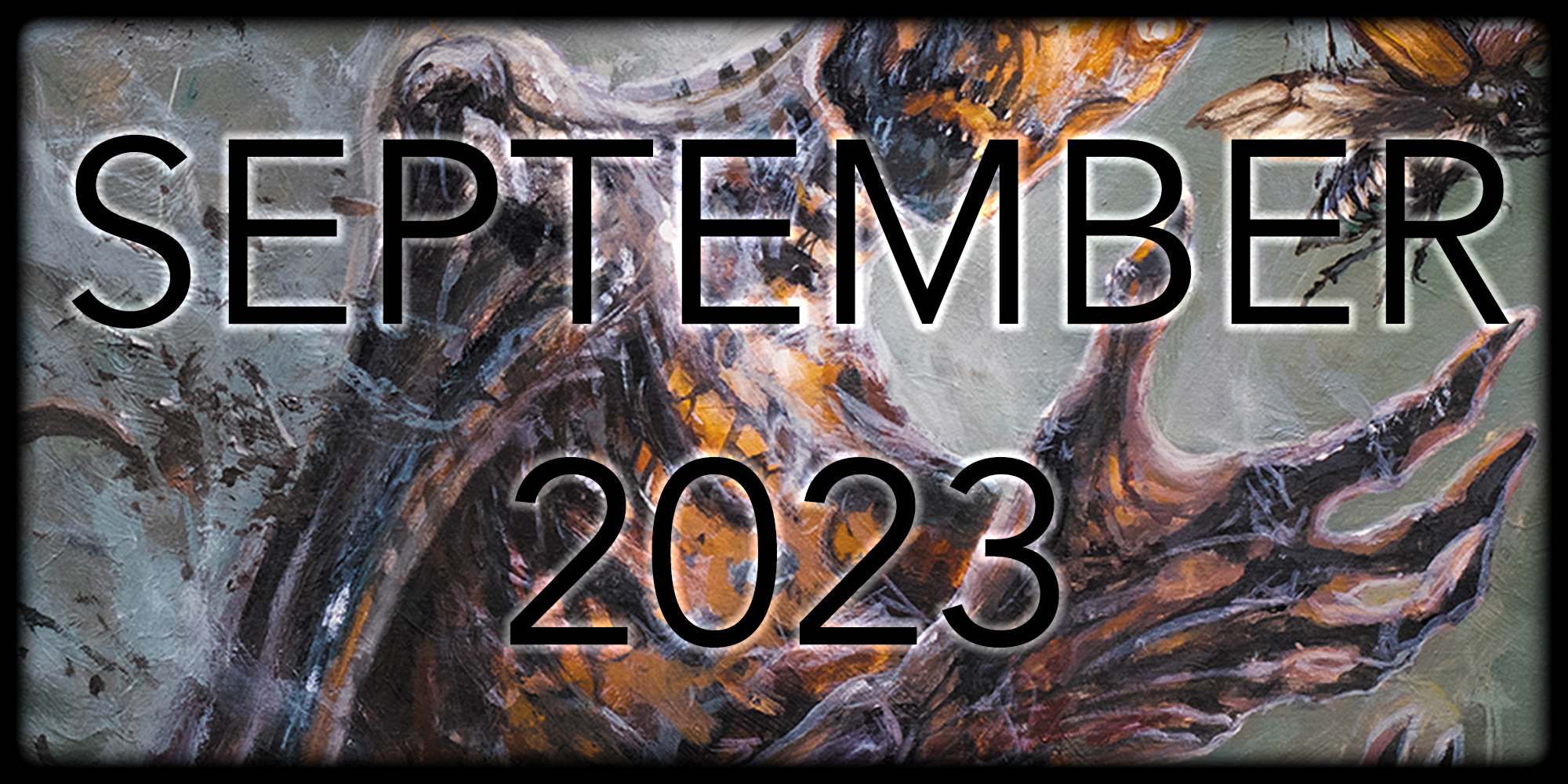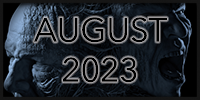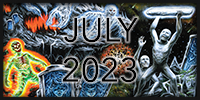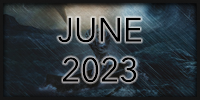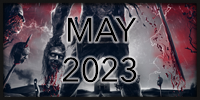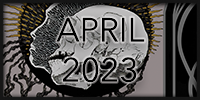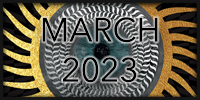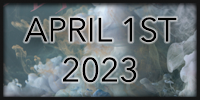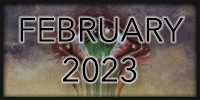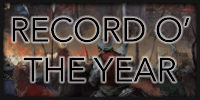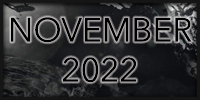Enigmatic and uncomfortably cheerful, gregarious and ambitious Happy Metal Guy managed to catch up with Mirai Kawashima from the Japanese avant-garde black metal band Sigh. He bombarded him with positivity, amusing anecdotes and uncomfortable questions about steel phalli until Mr. Kawashima relented; answering the questions and talking about… flowers? This fucking blog gets weirder and weirder every day. – AMG
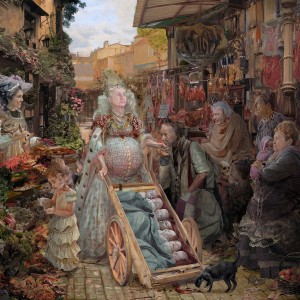 Sigh, why isn’t the Earth flat?
Sigh, why isn’t the Earth flat?
Sigh, why is the sky so blue and happy?
Sigh, I just missed the first two grindcore bands at a grind fest for being five minutes late.
Sigh, I was about to go to church yesterday but Varg Vikernes got to it first.
Sigh (サイ), the eclectic Japanese extreme metal group that is a “kvlt” name amongst connoisseurs of Asian and/or black metal. From being the first and last Asian metal band ever to be involved with the now-defunct record label of Euronymous of Mayhem infamy (Deathlike Silence Productions), the first and only Asian metal band to have been signed by German indie metal label giant Century Media to date, and even eventually moving on to two other reputable Western extreme metal labels Candlelight (UK) and The End (USA); Sigh has been a highly accomplished band to say the least, achieving career success and admiration from many that rival those experienced by eponymous Western extreme metal bands.
One of the most outstanding features of Sigh has always been their knack for what is generally agreed to be “avant-garde” elements in their brand of queer black metal. Not only was Sigh one of the earliest known black metal bands to use ambient keyboards during the Second Wave of Black Metal in the early ‘90s, it was also one of the first few metal-related acts to incorporate the saxophone into their music during the last five years of the last decade, alongside peers such as Yakuza, Shining (Norwegian) and Ihsahn.
Yet Mirai actually doesn’t think that Sigh’s music is avant-garde at all! Coming from a multilingual and proficient multi-instrumentalist who had also utilized many other un-metal instruments in Sigh’s earlier albums before the advent of the saxophone in 2005’s Gallows Gallery (such as the acoustic piano, electric organ, tambourine, bongo, glockenspiel, gong, sitar, tabla etc.), maybe the man himself has a radical view of what qualifies as “avant-garde” metal—and by the way, yet another exotic instrument in the form of the sarangi (an Indian string instrument) joins Sigh’s multi-national instrumental alumni on In Somniphobia.
Or, perhaps us metal press and fans were so musically ignorant and lacking in brain cells that we only just realized in hindsight that “eclectic metal” would have been a broader and more accurate term to use. Oh, the pretentiousness that possessed us all in the past.
In the wake of having Sigh’s latest magnum opus, In Somniphobia, named as Angry Metal Guy’s Record o’ the Month for March 2012, I, the had-been arch-nemesis of AMG [I’ll get you yet! – AMG], joined forces with a Japanophile called Phro to quiz the Sigh mastermind about various deadly serious issues; starting from my apparent taste for a part of the female anatomy and then going on to the usual metal-related topics, before going off tangent to Mirai’s views on modern Japanese culture, flower-viewing, and his witty one-liner responses to my ineffably humorous outro questions.
In Somniphobia by Sigh [Stream the album on BandCamp]
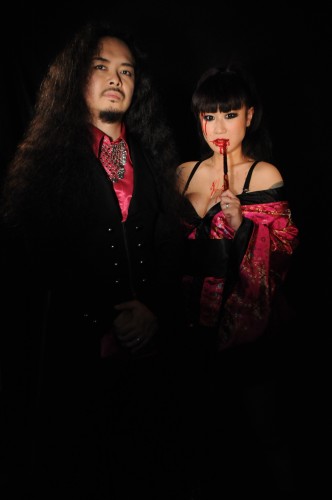 HMG: Your mastery of English is really good for a Japanese person. When did you first pick up English? Are you fluent in any other languages apart from Japanese and English?
HMG: Your mastery of English is really good for a Japanese person. When did you first pick up English? Are you fluent in any other languages apart from Japanese and English?
Mirai Kawashima: I started learning English when I became a junior-high student. It’s very typical in Japan, although these days, a lot of kids start learning it much earlier. Other than English and Japanese, I understand French, Chinese and German, but they’re far from fluent. I can read them, speak them a bit, but listening is always a big problem.
HMG: Everytime I eat something sweet, I will mention your band’s name.
Mirai Kawashima: I assume you mean pussy by “something sweet.”
HMG: Everytime I check my lottery ticket, and realize that I have not won anything, I will mention your band’s name too.
Mirai Kawashima: Yes, that’s life. But I hear a friend of my friend won a $1,500,000 lottery before and he built his own music studio with that amount of money. I’m seriously jealous.
HMG: When I broke up with Happy Metal Gal, I mentioned your band’s name as well. Oh, the sad memories.
Mirai Kawashima: Yes, that’s life. Nothing lasts forever, namely impermanence.
HMG: So, as you can see above, the word “Sigh” is very interesting to me. It’s just a simple “wordification” of a simple verbal expression, yet it can represent happiness, disappointment, sadness and possibly many more emotions. Back in the day, what did you have in mind when you decided to name your band “Sigh”? Did you have the same interpretation of the word “Sigh” like what I mentioned earlier?
Mirai Kawashima: Exactly, that was the reason why we picked up the word “Sigh”. We really did not want typical black/death metal names such as “Black <something>” or “Necro <something>”. And we came across the word “Sigh” and thought it’d be the perfect name for us since it gave [people like] you varied impressions and our music was as varied as the interpretation of the word as well.
But now that we live in the Internet age, in hindsight, I seriously think “Sigh” is too simple a name. It isn’t easy to google the articles on us due to this simple name!
HMG: Why is Sigh’s logo not represented by the Japanese kanji or hiragana characters for the word “Sigh”, but by the English version of the word instead? Was it perhaps a marketing strategy to make it easier for your band to get its name out there onto the Western metal market?
Mirai Kawashima: Well, to be honest, there was no strategy or anything at all. When we formed Sigh, we honestly never thought that we’d be able to release albums, tour the US and Europe, or even be internationally recognized or anything. Back then, there were no Japanese extreme metal bands that had an album out in the international market. So when we started up Sigh, we were just thinking that if we could release a 7″ EP, that would be awesome enough. Obviously, we were not ambitious enough to have a market strategy!
Preston Phro: Being a renowned Japanese band that have toured internationally extensively, what have you discovered about the differences between playing overseas and playing in Japan?
Mirai Kawashima: Well, I don’t see much difference. Metal fans are metal fans everywhere. But when we play in the USA or Europe, we often see fans singing along to our songs. It never happens in Japan, unfortunately. People do not understand English well, and so, few people have the guts to learn lyrics in English!
Preston Phro: The kohai/senpai aspect of Japanese hierarchy is a salient part of everyday life in Japan. Does it come through in the Japanese metal scene too?
Mirai Kawashima: Yes, it does! Some bands think they’re above the rest just because they’ve been playing for more than 20 years; even if they have only played for 30 people, all of whom are their friends (and their releases are always CD-R’s). Some people seriously think that: “The longer you’re in a band, the greater you become”. If you just start up a band and have no record deals or cannot draw a big audience, it’s no problem. You might still have a future. But after 20 years into the same situation, what’s the point? Seriously, that means nobody wants your music. And you want younger people to respect you just because you’re the elder one? That really makes me laugh. Of course, there are a lot of cool people, nice and down-to-earth. But it is also true that some people need the kohai/senpai system especially when they do not have anything to boast about other than being the elder one.
HMG: Sigh originally started out as one of those Venom-worshipping bands and played a primitive form of blackened thrash metal, but embellished the style with the surreal sound of ambient keyboards. Do you consider Sigh to be the first Japanese black metal band to have done such a thing?
Mirai Kawashima: What do you mean by “such a thing”? Using surreal sounds or evolving from a primitive to progressive style of black metal? Well, I don’t know for sure, but as far as I can see, I do not know of any bands that sound like us.
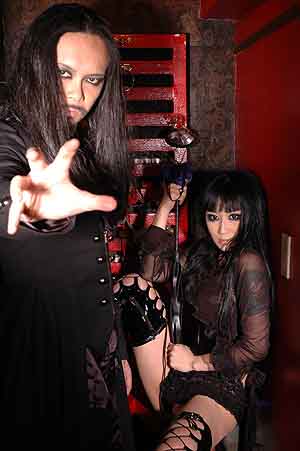 HMG: What was that one lightbulb-in-the-air moment that made you want to try out an avant-garde style of black metal?
HMG: What was that one lightbulb-in-the-air moment that made you want to try out an avant-garde style of black metal?
Mirai Kawashima: It was horror movies. When we did Hail Horror Hail, we wanted to make an album sound very scary and experimental. Then I noticed that lots of horror soundtracks had 20th Century experimental Classical music, featured in movies like “The Exorcist” and “Shining”.
Also, horror movies themselves often use cut-up technique to make their stories scary, and that was the first trigger that made us start to take in those elements.
HMG: Japanese culture is considered to be the world’s most creative in a weird way. From cute ideas such as clothing that can disguise you as a vending machine to crazy musical ideas like BABYMETAL, Japanese culture has made a heavy impression on the world in many, many areas; be it technology, music, art, fashion, or weird findings from their scientific research. Do you feel proud that your country’s culture has made such an impact on the world?
Mirai Kawashima: Yes, I’m proud of it.
To be clear though, I DESPISE crap like BABYMETAL. I DESPISE crappy people who are shameless enough to pay for such crap, but still, I’m glad that Japanese culture is being recognized internationally. After WWII, it was rather “one-way”. I mean every Japanese was trying to be like an American. Learning English, eating hamburgers, drinking Coke etc… being an Asian was kind of considered to be something uncool. But these days, it’s definitely changing. [It’s interesting to see how things that are of American origin get interpreted through a Japanese lens and get sent back to the US and western Europe as well. It’s like a funhouse mirror. — AMG]
HMG: While already avant-garde in nature, Sigh’s playing style on albums before In Somniphobia still had some form of black metal influences, such as the buzzsaw tone of the guitars and your deliverance of predominantly shriek-y harsh vocals. On the new album of In Somniphobia however, you seem to have taken your avant-garde style of metal to such an eclectic level that it is no longer as black metal as it used to be on previous albums. There’s a stronger presence of jazz in the form of Dr. Mikannibal’s sexy saxophone solos, there’s more clean singing, and the general feel of the overall music feels much “cleaner” than before. Is it accurate for me to say that the latest album, In Somniphobia, is the most Japanese (in the weirdly creative way I brought up earlier) record you have ever written to date?
Mirai Kawashima: First of all, I never think that Sigh’s work is avant-garde in any way. We’re a rather conservative band. What is so new about what we’re doing? Nothing.
Saxophone is a rather traditional instrument in rock music. The Beatles took in Indian elements more than four decades ago. Everything we do was already tried and done before. Nobody called AC/DC “avant-garde” just because they used bagpipes.
Well, I don’t know if In Somniphobia is very Japanese. Although I intended to make it very exotic, what was in my head was the music from India, Turkey, and Africa etc. If it sounds Japanese, it’s more of a spontaneous thing.
HMG: Dr. Mikannibal only joined Sigh on the eighth (and previous) studio album, Scenes From Hell. How did you meet her? What was so special about her that made you want to have her play for Sigh?
Mirai Kawashima: When we were recording Hangman’s Hymn, we were looking for a model for the booklet, and then we met her through one of our common friends. She told me she was in a death metal band and gave me a demo. Honestly, I thought it’d be just another female-fronted death metal band, but it wasn’t. Her voice was really strong and when I saw her band live, I thought she should be looking at the international metal scene. She can growl, sing, play the saxophone, and speak English fluently. It’s really difficult to even find a guy who meets just one of these requirements, and she looks good [No shit. – HMG]. So, why not?
 HMG: How is it like working with the Berlin-based metal artist Eliran Kantor on the album artwork for In Somniphobia? I’m guessing you find his style unique, since this is the second time you have worked with him already, as the first time was on the previous album, Scenes From Hell.
HMG: How is it like working with the Berlin-based metal artist Eliran Kantor on the album artwork for In Somniphobia? I’m guessing you find his style unique, since this is the second time you have worked with him already, as the first time was on the previous album, Scenes From Hell.
Mirai Kawashima: Yes, seriously, Eliran is a genius; and he understands what we’re looking for really well. We probably have close views of the world.
HMG: The artwork Kantor did for In Somniphobia reeks of Victorian-era influences. What is it supposed to illustrate with regards to the album theme? I’m perplexed by the intriguing sight of a commoner kissing the left hand of a seemingly pregnant English queen pushing a wheelbarrow filled with seemingly unconscious or dead infants.
Mirai Kawashima: Actually, I just told Eliran that the album concept is about nightmares and gave some demo tracks. That was all. There was no other detailed instructions or anything as I trusted Eliran 100%.
I believe all these things are the realization of Eliran’s own nightmare. This is a perfect artwork for In Somniphobia. It looks very beautiful on the first look, but once you notice the details, you know.
Preston Phro: Japanese culture traditionally and contemporaneously emphasize commune with nature, which also seems to be a big part of European black metal. Does Sigh’s brand of black metal contain similar aesthetics to European black metal?
Mirai Kawashima: I don’t think so. I live in Tokyo where our lives are almost completely separated from nature, hence, our view towards nature should be quite different from that of European black metal [musicians]. Whenever I go to countries like Norway, I truly adore the beauty of nature. Of course, Japan has some great nature, but unfortunately it is not a part of my life.
Preston Phro: Based on your personal experience with the local Japanese metal scene, do you think that this emphasis on mankind’s commune with nature helps make European black metal more palatable to the Japanese metal audience?
Mirai Kawashima: I’ve never thought about it. But if you’re talking about the lyrics, I don’t think so because most of the Japanese people do not understand English very well and they do not care about the lyrics.
As far as music goes, there should be some reasons why Japanese people like European stuff. The first reason is that Japanese is a very melodic language compared to English. English is probably one of the most rhythmic languages, which is why music such as hip-hop is very popular. On the other hand, Japanese people tend to like melodic music.
Another probable reason for this is that when Japan was Westernized, German Classical music was imported and taken as a role model. That could be partially why Japanese people like German music, and why German metal is popular here.
HMG: As someone who lives in Tokyo, the world’s largest metropolitan and Japan’s technology hub, do you think that mankind’s commune with nature is still relevant in modern society?
Mirai Kawashima: I’ve read a book about it, which was very interesting.
It says because of the sounds in the city, we are all [undergoing] huge [amounts of] stress. When our ancestors lived in the forest, the dangerous animals were the only things that made loud sounds (roaring) all of a sudden. So, we’re still scared if we suddenly hear a loud sound. It’s an instinct.
But what’s the situation in the city? The sounds from car horns and noise from the trains etc. There are so many types of sound that your instinct detects as things that could threaten your life, and as a result, it becomes so stressful to your mind and body even if you’re not aware of it. I’m not sure if this is 100% true, but at least it was quite convincing.
HMG: One of the most well known aspects of Japanese culture is the Japanese art of manga and anime. Which series do you enjoy (if any)?
Mirai Kawashima: “Hyoryu Kyoshitu” by Kazuo Umezu and “Kozure Ookami” by Koike Kazuo / Kojima Gouseki.
There are a lot of manga series that are very interesting at the beginning or halfway through, but there aren’t as many manga series that do not go downhill at all towards the end. The two series I mentioned above are extremely entertaining from the beginning until the very end.
I also like horror manga by Jirou Tsunoda, such as “Kyoufu Shinbun”, “Bourei Gakkyu”, “Gakuen Nanafushigi”, “Tokimeki no Haka”, and “Megiddo no Hi” etc.
HMG: You mentioned in an interview with Terrorizer magazine recently that you get a lot of nightmares, so I’m guessing they probably serve as inspiration for your avant-garde musical ideas and lyrics. However, does any of your musical or lyrical inspiration come from horror/thriller manga and anime too (such as Monster and Another)?
Mirai Kawashima: I remember that the lyrics for “Divine Graveyard” from Scenario IV: Dread Dreams were inspired by a manga called “David no Hoshi”. It’s not horror or thriller, but it’s about a boy who is a born murderer. I’d rather get inspiration from novels by E.A. Poe, Algernon Blackwood, Yasutaka Tsutsui, Sakyo Komatsu, and Musashi Kanbe than manga or anime though.
Preston Phro: You live in Tokyo. Which is your favorite rock/metal bar?
Mirai Kawashima: Godz is the only one I know of. I don’t go to rock/metal bars that often as they never play my favorite kind of metal, such as At War, Deathrow, Mentors, Omen, Exumer etc.
Preston Phro: Where can one enjoy excellent ramen in Tokyo?
Mirai Kawashima: All the good ramen places I loved are gone now. Ganko Ramen (3daime) was the best ramen I ever had in my life, but it has been gone for 20 years now. Ganko Ramen in Kouenji was really good, but they’re gone too. Butajuku in Nogata was really good; they’re Jiro-inspired, but the cook was really intimidating, so there weren’t many customers. Thanks to that, though, you didn’t have to be in a long line. Of course, they’re gone too.
Preston Phro: How often do you visit the sex shop next to Akihabara Station?
Mirai Kawashima: What I need is not available at such a major sex shop. That one is for sex posers who know nothing about real sex.
HMG: The Shinto Kanamara Matsuri (かなまら祭り, “Festival of the Steel Phallus”) is held each spring at the Kanayama shrine (金山神社). Have you ever been to that awesome festival? I wish I could see it once before I die.
Mirai Kawashima: Of course not, and it is not awesome at all! I HATE DICK!!
HMG: Do you get turned on whenever you see this happening during the festival?
Mirai Kawashima: I HATE DICK!!
HMG: One of psychology’s founders, Sigmund Freud, was of the belief that everything and anything humans do is compelled by the desire to have sexual intercourse at the end of the day. Do you agree with him? Why are the Japanese so celebratory about sex and how does making metal music then lead to the desire to have sexual intercourse at the end of the day if Sigmund Freud’s theory is correct?
Mirai Kawashima: European people may think that Japanese people are sex maniacs or something, but it is completely wrong. A survey in 2001 said “Americans appear to have the most sex at 132 times a year, with the Russians close behind at 122 times a year, the French at 121, and the Greeks at 115. The countries with the lowest frequency of sex are Japan at 37 times per year…” This is horrible. Japanese people should be ashamed of this result. I must emphasize that I have some Russian blood, so I’m far from these only-37-times-per-year losers. [That explains A LOT. – AMG]
About Freud, I agree with him 100%, because sex drive is strongly connected with any creative activities. I really can’t imagine great musicians having sex only once per month.
Preston Phro: It’s hanami season now! Where do you go for hanami (花見)? I’m making a wild guess that it’s Yoyogi Park (代々木公園).
Mirai Kawashima: I go to Tetsugakudo Park. It’s very close to my parents’ house. It is a famous haunted place and there are lots of stories like sightings of a headless biker etc. Also, it’s a famous suicide spot. My father was once taking a walk there and found a body hanging from a tree. I really cannot imagine how it will be like to happen to find a hanged dead body without any expectation.
Preston Phro: I work in Sakuraoka, Shibuya. The flowers are fucking awesome over here right now. Have you ever been here for hanami?
Mirai Kawashima: No, is it the same as Seiseki-Sakuragaoka? If so, I once went to Disk Union’s Seiseki-Sakuragaoka branch. I heard that branch is now gone.
HMG: Do you ever get inspiration for new riffs or lyrics whenever you engage in hanami?
Mirai Kawashima: Whenever I see cherry blossoms, I can’t help thinking about setting fire to them and going, “This is going to be an epic landscape!” [You sadist. – HMG]
Preston Phro: The phenomenon of cherry blossom petals falling from the sakura is supposed to signify the Buddhist idea of impermanence. Pretty much all poetry and art from about 1300 years ago that make references to spring mention the sakura or plum trees, hence, hanami is a visual reflection of the Japanese aesthetic appreciation for how fleeting life is. Do you ever think about this while engaging in hanami?
Mirai Kawashima: Not during hanami, but as I’m getting older, I think about the idea of impermanence a lot. Nothing lasts forever; everybody knows that. But when you’re young, you wouldn’t think or feel about it. This is scary but nobody can escape it.
HMG: I think you should start a band called “Burp”, and then sing about hamburger chefs from Hell.
Mirai Kawashima: Of course I won’t, because I cannot burp. This is pretty much a big problem. Because of this, I cannot drink beer or Coke too quickly.
HMG: No? How about “Ah-Choo”?
Mirai Kawashima: No, its abbreviation would be A.C., and it’s already taken.
HMG: “Sneeze”? “Cough”?
Mirai Kawashima: I’d rather snooze.
HMG: Do you think Dr. Mikannibal has a cure for metal elitism? I’m a hopeless victim of that illness.
Mirai Kawashima: Unfortunately not. She majors in sadism.
HMG: Oh, she’s not that kind of doctor? My bad. Thank you for your time Mirai. To infinity… and beyond!
